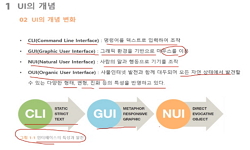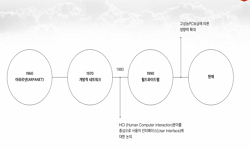In the design process, it is important for designers to observe user behavior and experience in the actual context. Indeed, user behavior and opinions provide important clues for reaching the goals of the entire design process (Kaulio, 1998). In spite...
http://chineseinput.net/에서 pinyin(병음)방식으로 중국어를 변환할 수 있습니다.
변환된 중국어를 복사하여 사용하시면 됩니다.
- 中文 을 입력하시려면 zhongwen을 입력하시고 space를누르시면됩니다.
- 北京 을 입력하시려면 beijing을 입력하시고 space를 누르시면 됩니다.
Experience Insighter: an inspiration tool for providing actual user experiences with design practitioners
한글로보기https://www.riss.kr/link?id=T14432985
- 저자
-
발행사항
울산 : Graduate School of Creative Design Engineering, 2017
-
학위논문사항
학위논문(석사) -- Graduate School of Creative Design Engineering , Engineering , 2017.2
-
발행연도
2017
-
작성언어
영어
- 주제어
-
발행국(도시)
울산
-
형태사항
; 26 cm
-
일반주기명
지도교수: Kim, Chajoong
- 소장기관
-
0
상세조회 -
0
다운로드
부가정보
다국어 초록 (Multilingual Abstract)
In the design process, it is important for designers to observe user behavior and experience in the actual context. Indeed, user behavior and opinions provide important clues for reaching the goals of the entire design process (Kaulio, 1998). In spite of this importance, there are some limitations for designers in field in conducting research on users. In fact, Korean design agencies have very few human and financial resources to carry out design research (Korea Institute of Design Promotion, 2015). In addition, it is difficult for design students or inexperienced practitioners to obtain a systematic understanding of or information about users. This project therefore aims to provide designers with a new source of information that can systematically provide information about actual user experience in the context of product use.
Prior to the full-fledged project, literature studies were conducted to understand user experience and establish a system for providing information. The user experience attributes (UXA) were defined by reviewing and reclassifying existing user experience frameworks. New classifications of the user experience could be a logical basis for the application. A total of 102 actual user experiences were collected and categorized according to their attributes, and it was confirmed that the defined user experience elements (UXA) could successfully classify user experience without exception.
The design concept of the new source was defined as an insight tool in the form of tablet PC or smartphone application that provides user experience cases. The application was defined to have four main functions: “New feeds,” “Search,” “Case hunting,” and “Board.” These functions enable users to collect, share, and manage new user experiences, and ultimately provide richer user experience cases in a systematic way.
Six prototyping tools for developing the application were investigated as an implementation method of the application, and MIT AppInventor was chosen as the tool to be used for the project, based on the functional characteristics of the final application and the ease of use of the tool. I have succeeded in implementing the functions of the application by utilizing the components needed, such as sensors of devices and the online database. Three possible scenarios for the application direction were proposed.
Eight design practitioners were asked to evaluate the usefulness of the tool and how the content could be improved. Overall, the practitioners said that they were willing to use the tool and expected that the tool would be helpful in designing for user experience. However, they did not believe the tool can help designers come up with ideas. There were also implications for further study: it is necessary to find a way to maintain the quality of cases reported by the user, and factors that may affect user experience should be considered.
목차 (Table of Contents)
- 1 Introduction 2
- Background 2
- Design Goal 3
- Research Questions 3
- Report Structure 4
- 1 Introduction 2
- Background 2
- Design Goal 3
- Research Questions 3
- Report Structure 4
- 2 Desktop Studies 6
- What is user experience? 6
- Redefined user experience attributes 8
- Verifying the user experience attributes 9
- Applying user experience attributes to the project 20
- 3 Design Proposal 22
- Project definition 22
- What the solution would be 22
- 4 Implementation 25
- Gathering cases 25
- Technology study 26
- Prototyping 30
- Final application 33
- 5 Testing and Refinement 41
- Validation of the design 41
- Results 42
- Findings 45
- Direction of refinement 46
- 6 Discussion and Conclusion 48
- Expected contribution 48
- Limitation 48
- Lessons learned 49
- Further study plan 49
- References
- Appendix
- Summary in Korean
- Acknowledgement












